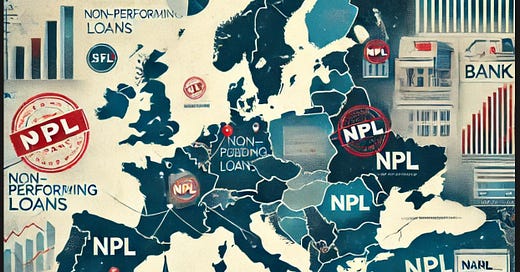The European market for non-performing loans (NPLs) has undergone substantial evolution, shaped by strategic regulatory reforms and dynamic economic conditions. Notably, Italy has played a pivotal role in this transformation, given its significant exposure to NPLs and innovative state-led solutions like the *Garanzia Cartolarizzazione Sofferenze* (GACS) scheme. This article explores the trajectory of NPLs in Europe, focusing on regulatory frameworks, market trends, and future implications.
Regulatory Landscape and Reforms
The European Union's approach to mitigating NPL risks has been multifaceted. Following the 2008 Global Financial Crisis (GFC), EU banks accumulated high volumes of distressed assets. This prompted the 2017 Action Plan by the Council of the European Union, which emphasized harmonizing regulatory practices and developing secondary markets for NPL transactions. Key developments include:
The Secondary Market Directive (2021): This directive set a unified framework for the sale and servicing of NPLs, focusing on transparency and borrowers' rights protection.
NPL Transaction Data Templates (2023)**: Established by the European Banking Authority (EBA), these templates enhance data quality for NPL transactions, facilitating smoother secondary market operations.
Italy’s Role in NPL Management
Italy's banking sector, once burdened by over €400 billion in NPLs in 2015, has led Europe's NPL de-risking efforts. By mid-2023, this figure had impressively reduced to €56 billion. This shift was significantly supported by securitization schemes such as GACS, which allowed banks to transfer distressed credit to private investors.
Despite the progress, Italy still holds substantial NPL volumes in investor portfolios. In 2023, it was reported that over €300 billion in NPEs required ongoing management. Italy’s proactive strategies, including legislative changes and improved recovery processes, serve as a model for effective NPL reduction.
Future Prospects for NPL Markets in Europe
The NPL market is poised for further development, driven by:
Enhanced Data Management: The implementation of comprehensive data templates, as seen with the EBA’s NPL Transaction Data Templates, is expected to foster transparency and improve market liquidity.
Technological Integration: Automated systems that streamline data collection and processing will likely reduce operational costs and enhance compliance.
Unified Platforms: Proposals for centralized NPL platforms could bolster creditor coordination, facilitate transactions, and improve the quality of data provided to potential investors.
Conclusion
The European NPL market’s evolution reflects a balanced blend of regulatory foresight and market-driven solutions. While Italy has showcased substantial progress, ongoing enhancements in data transparency, regulatory compliance, and technological adoption will be crucial for sustaining a robust secondary market for NPLs across the EU.
Rating Update on Italy
In recent credit rating actions, both Fitch Ratings and Morningstar DBRS revised Italy’s economic outlook to positive, affirming its sovereign credit rating at BBB. These updates underscore the recognition of Italy's fiscal improvement, stronger growth prospects, and political stability, which contribute to the revised outlooks.
Entering Italian NPE Market is a newsletter and a Linkedin Group focused on News, Updates, and Insights on Italian Banks, Distressed Credit Markets, Fintech, and Real Estate.
Relevant Links:
https://forms.office.com/Pages/ResponsePage.aspx?id=fzr-tOddJ02AZh1XKKGz6h73-dfD7FpKjM2p91mnIq1UN1haWkpRTUZGRkZLNlFVMDEwVDdNOU5PUC4u
This newsletter is free please consider supporting it with a small donation
See my full professional profile (available for consulting projects)
My Podcast on Financial News and Education
My new Podcast on Italian Politics







